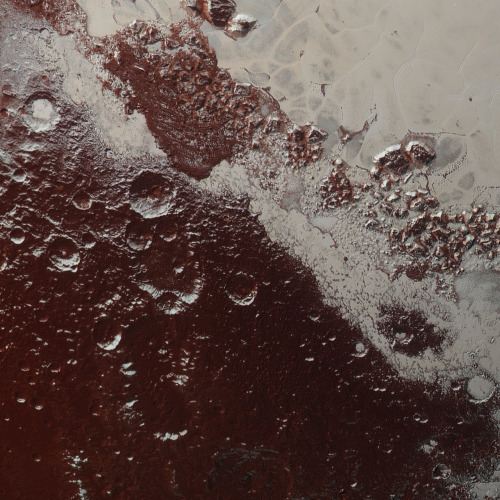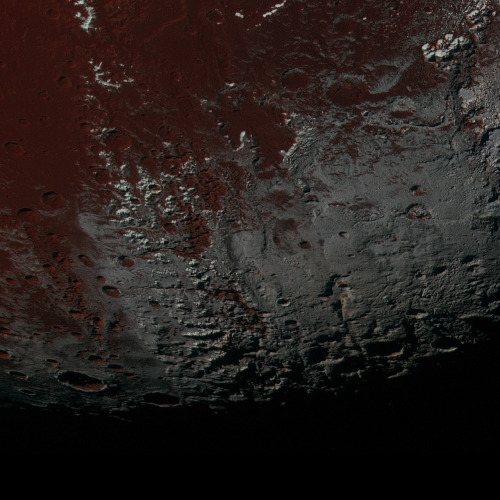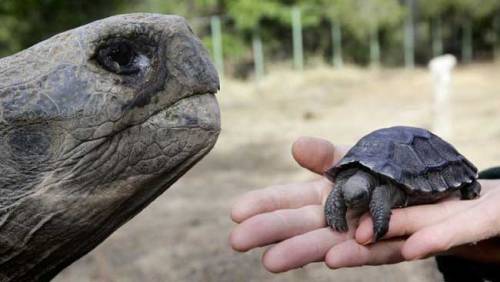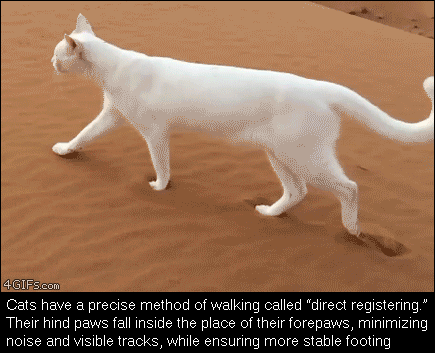Have You Ever Seen A Lybia Crab? Often Called Boxer Crabs, Or Pom-pom Crabs, These Tiny Crustaceans Are

Have you ever seen a Lybia crab? Often called boxer crabs, or pom-pom crabs, these tiny crustaceans are easily identified by a unique behavior: they hold anemones on their claws to defend themselves from predators, keeping the anemones small enough to wield by limiting their food intake. But how do they get the anemones in the first place? Researchers think they have an answer: by stealing one from another crab, and then splitting it in half to create two identical clones—one for each claw.
Two graduate students, Yisrael Schnytzer and Yaniv Giman, set out to discover how the Lybia crabs acquire their anemones. They spent years observing and collecting crabs (Lybia leptochelis, specifically) from the Red Sea. Given that Lybia crabs are exceptionally well-camouflaged and only a few centimeters across, this was no easy task, but they managed to observe or collect more than 100 individuals.
Every specimen Schnytzer and Giman found was in possession of a pair of anemones, and each anemone belonged to the genus Alicia. Interestingly, the anemones themselves were not found living by themselves; they were only found already living on the claws of Lybia crabs. The researchers decided to study some of the crabs in a laboratory, to see if more observation would solve the mystery of how they acquired their anemones to begin with.
In the lab, the researchers conducted several experiments, the first of which was to take one anemone away from a crab. When left with just one anemone, the crab solved the problem by splitting the remaining anemone into two. The two halves of the anemone would then regenerate into two identical clones, one for each claw, over the course of several days.
The second experiment involved removing both anemones from one crab and placing it in a tank with a crab that still had both its anemones. The result: the two crabs would fight, with the anemone-less crab usually succeeding in stealing one anemone from the other crab. These fights did not tend to result in injuries to the crabs themselves, and once each crab was in possession of one anemone, both crabs would split their anemone into halves to create a pair of clones.
In addition to these experiments, Schnytzer and Giman examined the genes of the anemones found on the wild crabs. Every crab collected from the wild was holding a pair of identical clones. This might mean that anemone theft is rampant among Lybia crabs in the Red Sea, and that it might be the main way that these crabs acquire their anemones.
At any rate, it is clear that the crabs are frequently splitting anemones in two, inducing asexual reproduction in another species and potentially limiting that species’ genetic diversity in the process—a rarity outside the human world.
Based on materials provided by PeerJ and ScienceDaily
Journal reference: Yisrael Schnytzer, Yaniv Giman, Ilan Karplus, Yair Achituv. Boxer crabs induce asexual reproduction of their associated sea anemones by splitting and intraspecific theft. PeerJ, 2017; 5: e2954 DOI: 10.7717/peerj.2954
Image credit: Yisrael Schnytzer
Submitted by volk-morya
More Posts from Science-is-magical and Others

A Falcon 9 Moon : Illuminating planet Earth’s night, full moons can have many names. This year the last full moon of northern hemisphere summer was on September 2, known to some as the Full Corn Moon. A few days earlier on August 30 this almost full moon rose just before sunset though, shining through cloudy skies over Cape Canaveral Air Force Station on Florida’s Space Coast. A well-timed snapshot caught the glare of rocket engines firing below the lunar disk, a Falcon 9 rocket’s first stage successfully returning to Cape Canaveral’s landing zone 1. About 9 minutes earlier, the same SpaceX Falcon 9 rocket had launched the SAOCOM 1B satellite toward polar orbit. The fourth launch for this reusable Falcon 9 first stage, it was the first launch to a polar orbit from Cape Canaveral since 1969. via NASA





This is one slice of an incredible high resolution, enhanced color image of Pluto, recently released by NASA. You can see the full, larger version here.
Credit: NASA/JHUAPL/SwRI

Baby Tortoises Show Up In The Galapagos For The First Time In Over A Century
There hadn’t been one single baby tortoise sighting in more than a century on the Galapagos Island of Pinzon, until a small group of the tiny, shelled youngsters were spotted this year.
The recent births are helping to pull the critically endangered animals back from the brink of extinction after they were nearly laid to waste as a result of human activity.
This is huge news for a species that has been struggling to survive for a century, relying on humans raising young tortoises bred in captivity until they are large enough to not fall prey to rats and predators.






Class in session as Planet X starts it off with our favorite dense objects:
Neutron Stars!
http://www.space.com/22180-neutron-stars.html
A researcher wrote about why neural networks like picdescbot hallucinate so many sheep – and yet will miss a sheep right in front of them if it’s in an unusual context. Enjoy!
It’s way too late for this, but it’s important to note that NASA didn’t discover the new earth-like planets. It was a group of astronomers lead by a dude name Michaël Gillon from the University of Liège in Belgium. Giving NASA credit for this gives the United States credit for something they didn’t do, and we already have a problem with making things about ourselves so. just like…be mindful. I’d be pissed if I discovered a small solar system and credit was wrongfully given to someone else.

My tummy is blushing now.
People Were Asked: ‘What’s The Coolest Thing Most People Don’t Know About Their Own Body?’
-
 lordofshades liked this · 1 year ago
lordofshades liked this · 1 year ago -
 bertramwilberforcewooster reblogged this · 2 years ago
bertramwilberforcewooster reblogged this · 2 years ago -
 pandoratelenor reblogged this · 6 years ago
pandoratelenor reblogged this · 6 years ago -
 drdandy liked this · 6 years ago
drdandy liked this · 6 years ago -
 mallow-wolf reblogged this · 6 years ago
mallow-wolf reblogged this · 6 years ago -
 mallow-wolf liked this · 6 years ago
mallow-wolf liked this · 6 years ago -
 leodeserti reblogged this · 6 years ago
leodeserti reblogged this · 6 years ago -
 whatasmoothgardener reblogged this · 6 years ago
whatasmoothgardener reblogged this · 6 years ago -
 whatasmoothgardener liked this · 6 years ago
whatasmoothgardener liked this · 6 years ago -
 megucahistorianofficial reblogged this · 6 years ago
megucahistorianofficial reblogged this · 6 years ago -
 ilikethisship reblogged this · 7 years ago
ilikethisship reblogged this · 7 years ago -
 notarme liked this · 7 years ago
notarme liked this · 7 years ago -
 gloryfalling reblogged this · 7 years ago
gloryfalling reblogged this · 7 years ago -
 loveorlace reblogged this · 7 years ago
loveorlace reblogged this · 7 years ago -
 quazeros reblogged this · 7 years ago
quazeros reblogged this · 7 years ago -
 quazeros liked this · 7 years ago
quazeros liked this · 7 years ago -
 bugsnatcher liked this · 7 years ago
bugsnatcher liked this · 7 years ago -
 rokpur reblogged this · 7 years ago
rokpur reblogged this · 7 years ago -
 dimens1ons liked this · 7 years ago
dimens1ons liked this · 7 years ago -
 dirty--shawna liked this · 7 years ago
dirty--shawna liked this · 7 years ago -
 loveorlace reblogged this · 7 years ago
loveorlace reblogged this · 7 years ago -
 corrrntortillla reblogged this · 7 years ago
corrrntortillla reblogged this · 7 years ago -
 betsybugaboo reblogged this · 7 years ago
betsybugaboo reblogged this · 7 years ago -
 gender-trash reblogged this · 7 years ago
gender-trash reblogged this · 7 years ago -
 thatobscurefigure liked this · 7 years ago
thatobscurefigure liked this · 7 years ago -
 loveorlace reblogged this · 7 years ago
loveorlace reblogged this · 7 years ago -
 chaosandcats reblogged this · 7 years ago
chaosandcats reblogged this · 7 years ago -
 handdarks reblogged this · 8 years ago
handdarks reblogged this · 8 years ago -
 noobcoobloobhsoob reblogged this · 8 years ago
noobcoobloobhsoob reblogged this · 8 years ago -
 noobcoobloobhsoob liked this · 8 years ago
noobcoobloobhsoob liked this · 8 years ago -
 darkwind77 reblogged this · 8 years ago
darkwind77 reblogged this · 8 years ago -
 wolfdragonsrequiem reblogged this · 8 years ago
wolfdragonsrequiem reblogged this · 8 years ago -
 ivanerzz reblogged this · 8 years ago
ivanerzz reblogged this · 8 years ago -
 masters-chief reblogged this · 8 years ago
masters-chief reblogged this · 8 years ago -
 acrasiomycetes reblogged this · 8 years ago
acrasiomycetes reblogged this · 8 years ago


